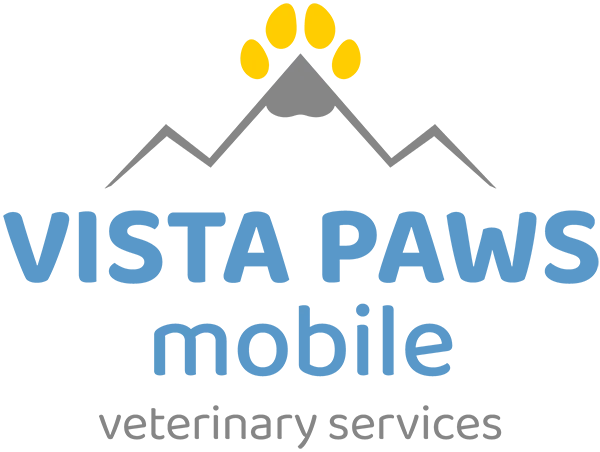Library
-
Tube feeding is important to maintain adequate nutrition and prevent liver problems in cats that are anorexic for at least 2 days. Tube feeding may be needed because of a mechanical problem interfering with ingestion of food or because of a systemic illness that is causing the cat to be anorexic. There are several different options for tube feeding. Naso-esophageal/naso-gastric intubation passes a tube down the nose into the esophagus and sometimes into the stomach. This is only suitable for short term feeding. Placement of an esophageal tube requires sedation or anesthesia as a hole is made through the skin and esophagus to pass the tube through into the esophagus. An esophageal tube can be maintained for weeks to months. A gastrostomy tube requires anesthesia to pass a tube through the skin directly into the stomach. This is beneficial for longer term feeding. A tube must be protected to prevent the cat from pulling it out. The recommended diet is administered in liquid form by a syringe several times a day. Complications are rare with clogging and inadvertent removal most common.
-
Tularemia is an infection of the bacteria Francisella tularensis and is most common in rabbits and rodents. Infection in cats occurs from ingestion of an infected animal, drinking contaminated water, or getting bitten by a blood-sucking insect. Clinical signs include enlarged lymph nodes and draining abscesses. Treatment includes antibiotics, surgical removal of any draining abscesses, and any other supportive care warranted by the cat's condition. Tularemia is a reportable zoonotic disease.
-
Tularemia is an infection of the bacteria Francisella tularensis and is most common in rabbits and rodents. Infection in dogs occurs from ingestion of an infected animal, drinking contaminated water, or getting bitten by a blood-sucking insect. Tularemia causes mild illness in healthy dogs. More severe clinical signs include enlarged lymph nodes and draining abscesses. Treatment includes antibiotics, surgical removal of any draining abscesses, and any other supportive care warranted by the dog's condition. Tularemia is a reportable zoonotic disease.
-
Malignant lymphoma (lymphosarcoma) and leukemia are among the most common malignancies seen in ferrets. Diagnosis may be made by fine needle aspiration or biopsy. For a dedicated owner with a compliant patient, surgery and/or treatment with chemotherapy is an option. Remission of lymphoma is possible with treatment in ferrets, but recurrence is common. Ferrets also commonly develop insulin-producing tumors of the pancreas that lower the ferret’s blood sugar and cause weakness, weight loss, lethargy, seizures, coma, and death. Insulinoma commonly spreads from the pancreas to the liver, so surgical removal of pancreatic insulinoma nodules may not be curative. Affected ferrets respond well for months to years to medical therapy with glucose-promoting drugs (prednisone) and anti-insulin drugs (diazoxide). Drugs suppress effects of the tumor but do not eliminate it; and ferrets on medical treatment must have their medications increased over time as the tumor grows.
-
Tylosin is an antibiotic given by mouth or by injection in small mammals and is used off label to treat diarrhea and inflammatory bowel disease. Common side effects include decreased appetite and diarrhea. Do not use in pets that are allergic to it. If a negative reaction occurs, call your veterinary office.
-
Damage to the tympanic membrane and middle ear infections can be very painful for cats and cause a variety of clinical signs affecting the skin and nervous system. Diagnosis often requires a thorough ear examination with testing while your cat is under sedation or anesthesia. The treatment methods and prognosis depend on the nature of your cat's condition.
-
Damage to the tympanic membrane and middle ear infections can be very painful for dogs and cause a variety of clinical signs affecting the skin and nervous system. Diagnosis often requires a thorough ear examination with testing while your dog is under sedation or anesthesia. The treatment methods and prognosis depend on the nature of your dog's condition.
-
Ultra-micronized palmitoylethanolamide (PEA-um), brand name Redonyl Ultra, is a nutraceutical used to support skin health in dogs and cats. PEA-um comes in oral chewable and powder forms. It is used "off label" or "extra label".
-
Ultrasound uses the reflection of sound waves to generate an image of internal structures, allowing for identification of masses, pregnancy diagnosis, abnormal heart function and muscle size, abnormalities of the orbit, and abnormal appearance of abdominal organs. Ultrasound results can be analyzed in real time; however, assessment by a radiologist may take several days. Ultrasound is an invaluable tool to detect problems in a non-invasive fashion.
-
Ultrasound uses the reflection of sound waves to generate an image of internal structures allowing for identification of masses, pregnancy diagnosis, abnormal heart function and muscle size, abnormalities of the orbit, and abnormal appearance of abdominal organs. Ultrasound results can be analyzed in real time; however, assessment by a radiologist may take several days. Ultrasound is an invaluable tool to detect problems in a non-invasive fashion.

